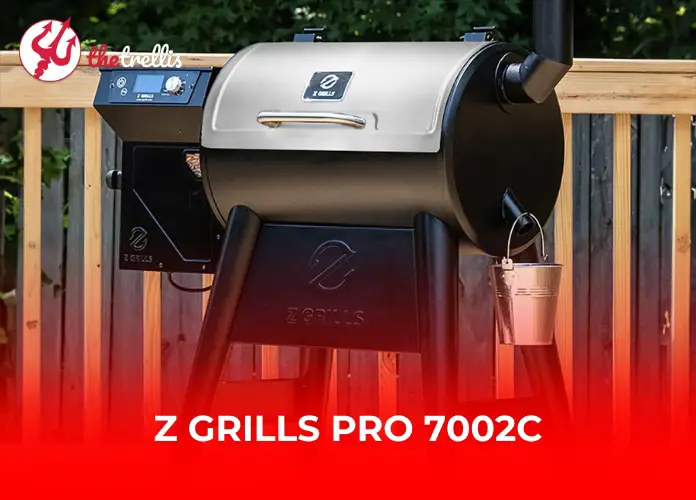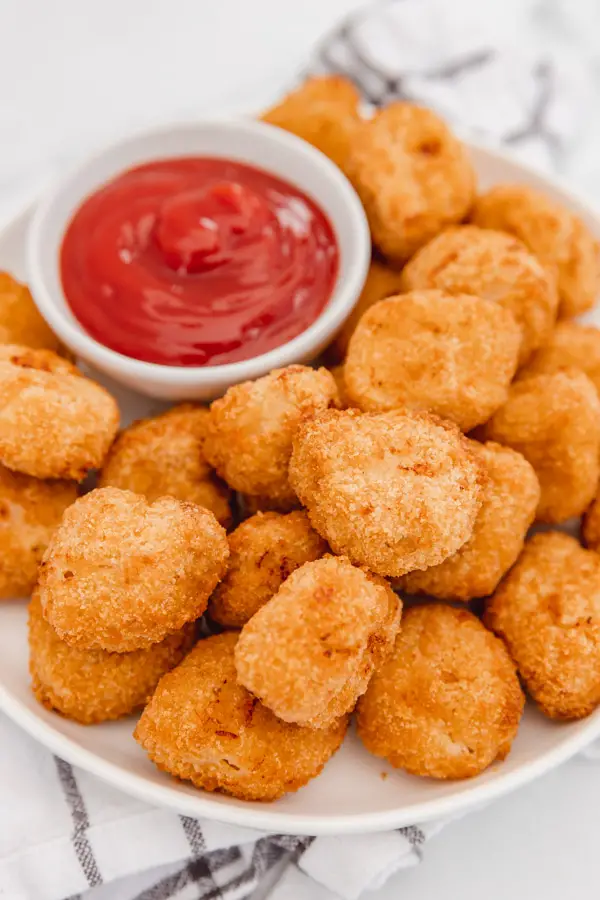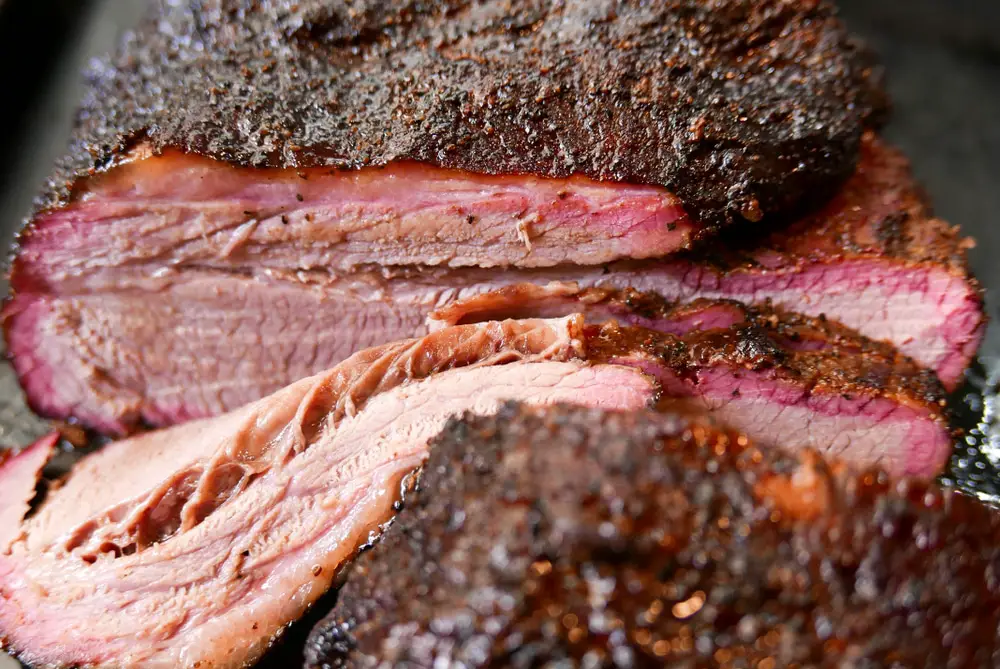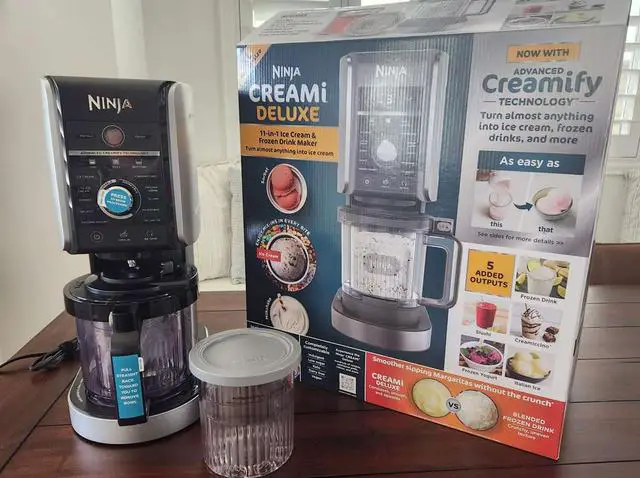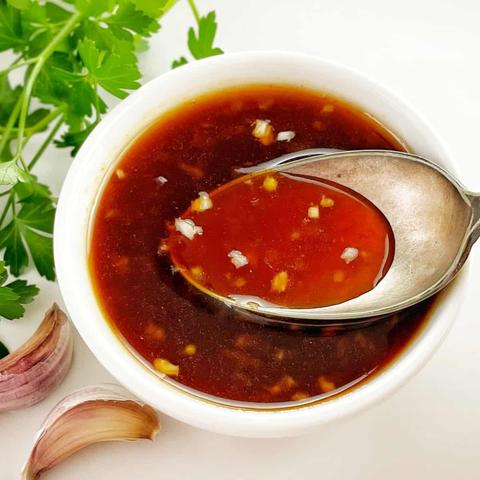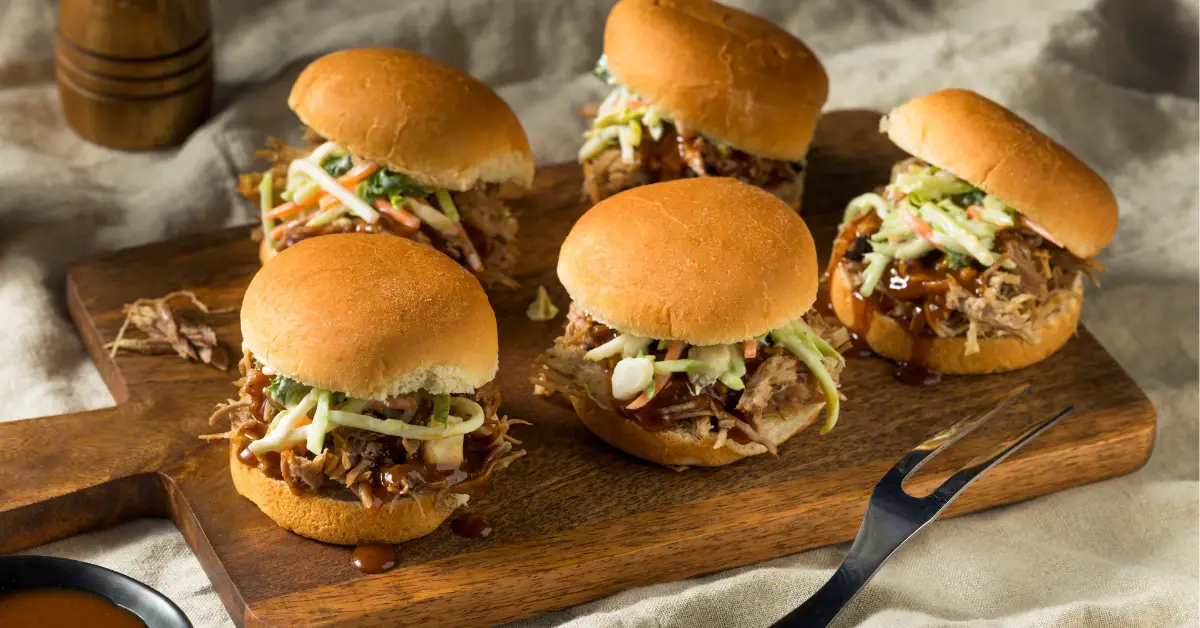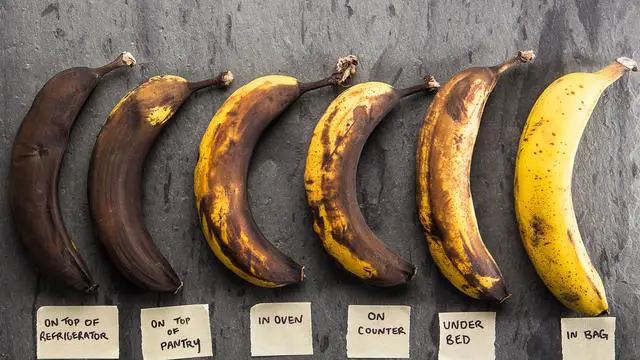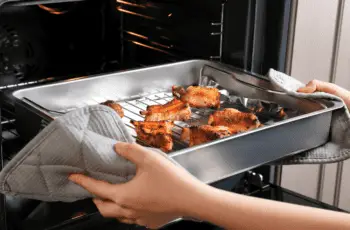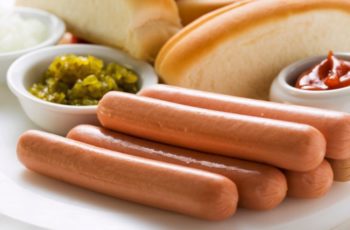
The memory is still crystal clear. I’m standing in my backyard, staring at a beautiful, but intimidating, piece of machinery. It was my very first smoker. In my hands, I held a prime-grade brisket that cost more than I cared to admit, and my mind was a whirlwind of doubt. What if I dry it out? What if I create a bitter, sooty mess instead of that glorious, dark bark I’ve seen in pictures? The fear of ruining an expensive cut of meat on a new, unfamiliar grill is a rite of passage for every aspiring pitmaster.
If you’re reading this, chances are you’re standing in those same shoes, ready to dive into the incredible world of wood-fired cooking but unsure where to start. Welcome. You’ve come to the right place.The good news is that we live in a golden age of outdoor cooking. The modern pellet grill has demystified the art of smoking, transforming it from a finicky, all-night affair into a precise, repeatable science that anyone can master. It’s the perfect marriage of authentic wood smoke flavor and modern, push-button convenience. These incredible machines are the ultimate gateway to producing jaw-dropping BBQ, and I’m here to guide you through finding the best pellet grill for beginners to start your journey.
This isn’t just a list of products. This is your roadmap. We’ll break down what makes a pellet grill tick, what features actually matter for a novice, and what to ignore. By the end of this guide, you’ll not only know which grill to buy, but you’ll have the confidence to fire it up and cook something truly spectacular. Let’s get you from nervous newcomer to backyard hero.
Why a Pellet Grill is Your Secret Weapon

Before we dive into models, let’s talk about the why. Why a pellet grill over the classic charcoal kettle or the ubiquitous gas grill? For a beginner, the answer is simple: control and flavor.
- Charcoal Grills: The undisputed king of flavor, but with a notoriously steep learning curve. Managing airflow, maintaining a consistent temperature for 8-12 hours, and dealing with flare-ups is a true craft that takes years to perfect.
- Gas Grills: The master of convenience. Turn a knob, and you’re cooking. But that convenience comes at a cost: flavor. You simply cannot replicate the deep, smoky essence of a real wood fire with propane.
- Pellet Grills: This is where the magic happens. A pellet grill offers the best of both worlds. It uses 100% natural hardwood pellets, delivering that authentic smoke flavor you crave. But it does so with the precision of a kitchen oven. An automated auger feeds pellets into a fire pot, while a digital controller and fan maintain your set temperature with remarkable accuracy. This “set it and forget it” functionality is the single biggest reason why the best pellet smoker for beginners is, without a doubt, a pellet grill.
You can smoke a pork butt low and slow all day, bake a wood-fired pizza, roast a chicken, or sear a steak, all on one versatile machine. This versatility is what will keep you excited and exploring new recipes for years to come.
Read more: Coleman RoadTrip 285 Review
Top 5 Best Pellet Grill for Beginners 2025
| IMAGE | PRODUCT | DETAILS | LINK |
|---|---|---|---|
Best Overall  | Traeger Grills Pro 22 |
|
|
Best Splurge  | Recteq RT-2500 BFG |
|
|
Best Value  | Z-GRILLS Pro 7002C |
|
|
Best for Features  | Camp Chef Woodwind 36 |
|
|
Best Portable for beginner  | Traeger Tailgater 20 |
|
|
In-Depth Reviews: Finding Your Perfect Match
1. Best Overall: Traeger Grills Pro 22
If you were to ask ten pitmasters what the quintessential, no-fuss pellet smoker for beginners is, seven of them would likely say a Traeger Pro Series. The Pro 22 is a legend for a reason. It’s the Toyota Camry of the pellet grill world: it’s not the flashiest, but it is unbelievably reliable, easy to operate, and does its job exceptionally well every single time.
Why It’s the Best Overall: The Traeger Pro 22 nails the fundamentals. It’s built around Traeger’s Pro D2 digital controller, a workhorse system that holds temperatures within +/- 15°F. While not a true PID controller, it’s incredibly consistent and has been refined over years of real-world use. This grill simply works. There are no complex modes to learn, no confusing settings. You set the temperature, and the grill does the rest. This simplicity is its greatest strength for a newcomer.
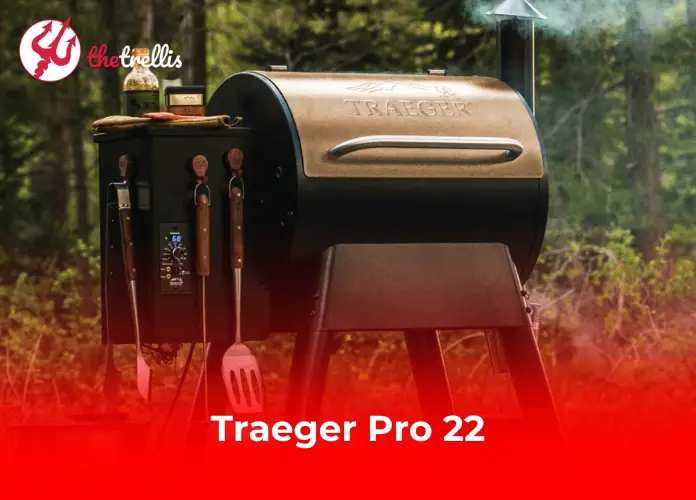
Check Price on Amazon
Read Review Here
Features That Shine for Beginners:
- Digital Pro Controller: The interface is dead simple. A single knob and a clear digital display let you set your temperature in 25-degree increments from 180°F up to 450°F. It also has ports for two meat probes (one is included), so you can monitor your food’s internal temperature right on the grill’s display.
- Build and Capacity: With 572 square inches of cooking space, you have room for 4 chickens, 5 racks of ribs, or 24 burgers. The porcelain-coated grates are a breeze to clean, and the 18-pound hopper holds enough pellets for most all-day cooks without needing a refill.
- Low Maintenance: The Pro 22 is designed for convenience. While it lacks a dedicated ash cleanout system, the fire pot is easily accessible for a quick vacuum between cooks. It’s a design that prioritizes durability and function over flashy, breakable parts. This is why it’s often called the best Traeger grill for beginners.
The Beginner’s Benefit: The Traeger Pro 22 removes the intimidation factor. Its straightforward operation gives you the confidence to tackle ambitious cooks right out of the box. You’re not just buying a grill; you’re buying into the largest and most supportive community in BBQ. The Traeger app and website are treasure troves of recipes, tutorials, and tips that will accelerate your learning curve dramatically. It’s the perfect launchpad for your BBQ journey.
| pros | cons |
|---|---|
|
|
2. Best Splurge: recteq RT-2500 BFG
Let’s be clear: the recteq RT-2500 BFG (which affectionately stands for “Big F@#$ing Grill”) is absolute overkill for most beginners. But for the beginner who subscribes to the “buy once, cry once” philosophy and wants a grill they will never, ever outgrow, this is it. This isn’t just a grill; it’s a lifetime investment in BBQ excellence.
Why It’s the Best Splurge: The recteq difference comes down to two things: build quality and temperature control. Every component of this grill is stainless steel, from the cooking chamber and grates to the firepot and drip pan. This high-quality construction provides incredible heat retention and durability that cheaper grills can’t match. It’s powered by recteq’s industry-leading PID controller, which maintains your set temperature with surgical precision, holding it within +/- 5°F, even in wind and cold.
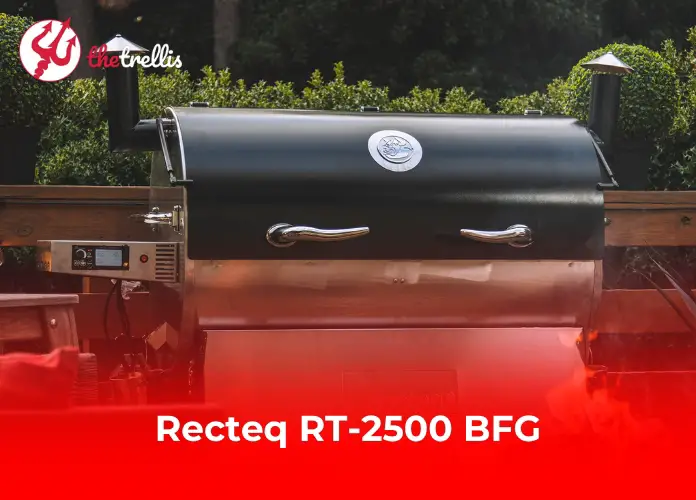
Check Price on Amazon
Read Review Here
Features That Shine for Beginners (Who Want the Best):
- Unmatched PID Control with Wi-Fi: The Smart Grill Technology controller is the best in the business. It’s Wi-Fi enabled, allowing you to control and monitor every aspect of your cook from the excellent recteq app. For a beginner, this means you can trust the grill to do its job perfectly while you learn the nuances of smoke, time, and temperature.
- Massive Capacity: With a staggering 2500 square inches of cooking space across three levels and dual 30+ pound hoppers, you can cook for the entire neighborhood. While you may not use all this space at first, you will never have to worry about running out of room.
- Built Like a Tank: The 304 stainless steel build isn’t just for looks. It prevents rust and corrosion, and its thermal properties mean more consistent temperatures and greater fuel efficiency. This grill is built to be passed down to your kids.
The Beginner’s Benefit: The RT-2500 BFG eliminates equipment as a variable. If something goes wrong with your cook, you know it wasn’t the grill’s fault. This forces you to learn the craft—how to trim a brisket, when to wrap, when to rest—on a platform of perfect consistency. The peace of mind that comes from knowing your temperature is rock-solid is priceless. Furthermore, recteq’s legendary customer service is like having a personal BBQ coach on call, ready to help with any question you might have.
| pros | cons |
|---|---|
|
|
3. Best Value: Z GRILLS 7002C
For years, Z Grills has been quietly making a name for itself by offering an incredible amount of grill for the money. The 7002C model is the flagship example of their philosophy, packing in features and performance that you’d typically find on grills costing hundreds more. This is the best pellet smoker grill for beginners who want maximum bang for their buck.
Why It’s the Best Value: The Z Grills 7002C delivers on the core promise of pellet grilling without the premium price tag. It features an upgraded PID controller for precise temperature management, a generous cooking area, and a solid build. It proves that you don’t need to break the bank to produce top-tier barbecue. Z Grills focuses on putting the money where it counts: the controller and the cooking chamber.
Check Price on Amazon
Read Review Here
Features That Shine for Beginners:
- PID Temperature Control: This is a standout feature at this price point. The ability to maintain temperatures within a tight range gives beginners a huge advantage, leading to more consistent and successful cooks from day one.
- Large Cooking Area: The 7002C boasts 694 square inches of total cooking space (a 504 sq. in. main rack and a 190 sq. in. warming rack). This is ample room for large cuts of meat and cooking for a crowd, offering great versatility as you grow your skills.
- User-Friendly Design: From the easy-to-read digital display to the 20-pound hopper with a pellet cleanout chute, the 7002C is designed for convenience. It also includes a cover with your purchase, saving you an extra expense.
The Beginner’s Benefit: The Z Grills 7002C offers a low-risk, high-reward entry into the world of pellet smoking. You get the single most important feature for success—a PID controller—without the hefty investment. This allows you to learn the ropes and decide if pellet grilling is truly for you. It’s a reliable, capable machine that will let you master the fundamentals of smoking, from ribs and chicken to your first overnight pork butt, without feeling like you’ve overcommitted financially.
| pros | cons |
|---|---|
|
|
4. Best for Features: Camp Chef Woodwind 36
Camp Chef has always been about innovation and versatility, and the Woodwind 36 is their masterpiece. This grill is for the beginner who is also a tinkerer, a gadget lover who wants a machine that can do it all. It’s more than a smoker; it’s a complete outdoor cooking system.
Why It’s the Best for Features: The Woodwind’s genius lies in two key areas: its unparalleled smoke control and its modular design. The Gen 2 PID controller not only has Wi-Fi but also features a unique “Smoke Number” setting from 1 to 10. This allows you to dictate how much smoke the grill produces, independent of temperature—a level of control that even most high-end grills don’t offer. Furthermore, the inclusion of Camp Chef’s “Sidekick” attachment transforms the grill, allowing you to add a griddle, grill box, or pizza oven right on the side.
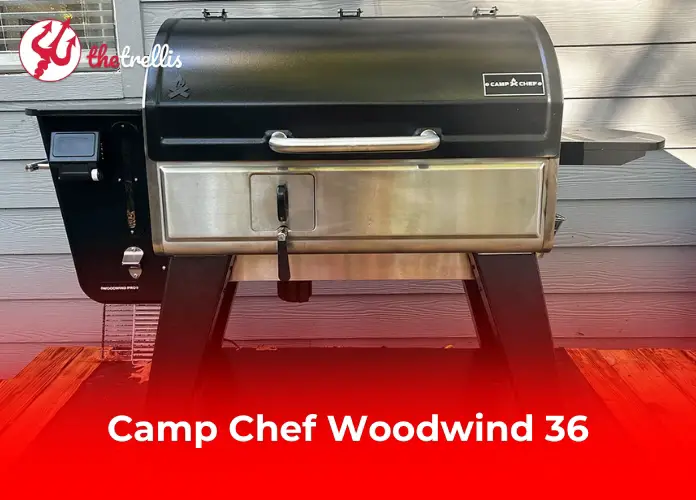
Check Price on Amazon
Read Review Here
Features That Shine for Beginners:
- PID Controller with Wi-Fi & Smoke Control: This controller is a dream for someone learning the craft. You can hold a perfect 225°F for a pork butt while dialing the Smoke Number up to 10 for heavy smoke flavor, or dial it down to 2 for a more subtle kiss of smoke on chicken. The Wi-Fi and app are intuitive and make monitoring long cooks a breeze.
- Slide and Grill Technology: A simple lever allows you to slide the heat deflector out of the way, exposing the fire pot for direct-flame grilling. This means you can get a beautiful, high-heat sear on a steak after smoking it—true two-zone cooking on one machine.
- Ash Kickin’ Cleanout: This is arguably the best ash cleanup system on the market. A simple pull of a knob drops all the ash from the firepot into a removable cup underneath. It takes 10 seconds and keeps your grill running efficiently.
The Beginner’s Benefit: The Camp Chef Woodwind 36 provides a clear upgrade path and encourages experimentation. You start with an amazing pellet smoker for beginners, and as you gain confidence, you can add Sidekick accessories to expand your culinary horizons. You can learn to perfect your reverse-seared steaks, wood-fired pizzas, and griddled smash burgers all on one platform. This versatility prevents you from getting bored and ensures the grill will grow with you for years to come.
| pros | cons |
|---|---|
|
|
5. Best Portable for beginner: Traeger Grills TFB30KLF Tailgater
Who says great barbecue has to stay in the backyard? For the RVer, the camper, the tailgater, or the apartment dweller with a small patio, the Traeger Tailgater brings authentic wood-fired flavor anywhere you go. It packs the core Traeger experience into a compact, portable package.
Why It’s the Best Portable: The Tailgater is ingeniously designed for life on the move. It features EZ-Fold legs that allow it to collapse down to a size that easily fits in the trunk of a car or an RV storage bay. Despite its smaller size, it still uses Traeger’s reliable digital controller and has enough space to cook for a small group, making it the clear choice for the best Traeger for beginners who prioritize portability.
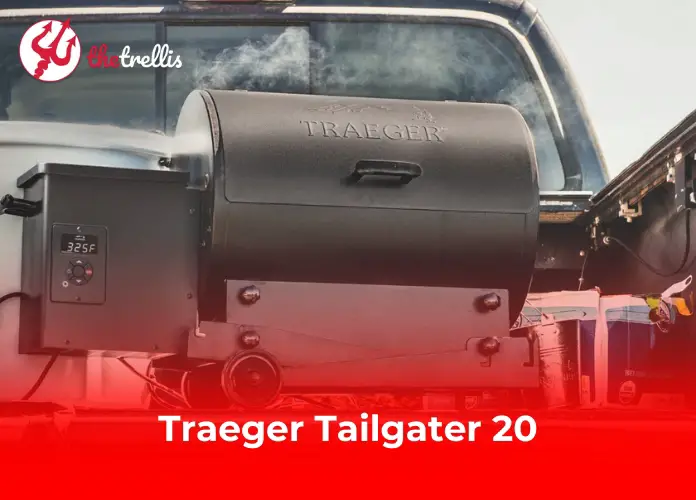
Check Price on Amazon
Read Review Here
Features That Shine for Beginners:
- Portability and Compact Size: Weighing in at just 62 pounds with foldable legs, it’s designed to be moved. Setup and takedown are quick and easy, making it perfect for spontaneous adventures.
- Digital Arc Controller: This controller maintains a consistent temperature and includes a “Keep Warm” mode, a handy feature for timing meals perfectly when you’re away from your home kitchen. It provides the same set-it-and-forget-it convenience as its larger siblings.
- Sufficient Cooking Space: With 300 square inches of cooking area, you can still cook a surprising amount of food—2 whole chickens, 3 racks of ribs, or 12 burgers. It’s the perfect size for feeding a family or a small group of friends at the campsite.
The Beginner’s Benefit: The Tailgater lowers the barrier to entry in terms of both price and size. It allows someone with limited space or a mobile lifestyle to experience the joy of pellet grilling without compromise. It’s simple to use, easy to store, and delivers that signature Traeger flavor. It’s the perfect way to learn the fundamentals of smoking on a manageable scale before potentially upgrading to a larger backyard model down the road.
| pros | cons |
|---|---|
|
|
How We Tested Pellet Grills
From my perspective, I put pellet grills through a real workout to see what they’re truly capable of. It’s not just about turning them on and grilling. My testing process is comprehensive, focusing on the features that matter most in a professional kitchen and at home.
- Smoking and Searing Performance: A good pellet grill should be able to do both. I test for low-and-slow smoking by cooking pork butts and ribs, looking for consistent temperature, a good smoke ring, and a flavorful, tender result. For high-heat searing, I grill steaks and burgers to see if the grill can create that perfect, all-over crust.
- Temperature Consistency and Control: The promise of a pellet grill is “set it and forget it.” I verify this by using multiple digital probes to check for hot and cool spots across the cooking surface. I also test how quickly the grill recovers temperature after opening the lid and how well it maintains a steady heat, especially at different settings.
- Build Quality and Design: I get my hands dirty, starting with the assembly. I pay attention to the clarity of the instructions and the quality of the materials. I look at things like the insulation, the sturdiness of the grates, and the design of the hopper and grease management system.
- Ease of Use and Features: I explore the full range of features, from app connectivity and digital controls to the convenience of pellet clean-out systems. I want to know if the technology is intuitive and genuinely helpful or just a gimmick.
- Flavor Profile: Ultimately, it’s about the food. I compare the smoky flavor from different grills and with different types of pellets. I’m looking for a grill that imparts a rich, authentic wood-fired taste to everything I cook.
Grill Buying Guide: 7 Factors to Consider

1. Size & Cooking Area
The first question to ask yourself is, “Who am I cooking for?” Grill size is measured in square inches of primary cooking area (the main grates).
- Small (Under 400 sq. in.): Perfect for individuals, couples, or small families (up to 4 people). Ideal for patios and balconies where space is a premium.
- Medium (400-550 sq. in.): This is the sweet spot for most households. It comfortably accommodates cooking for an average family and has enough room to handle a small party or gathering. You can easily fit a couple of chickens or several racks of ribs.
- Large (550+ sq. in.): If you’re the designated neighborhood pitmaster and frequently host large parties, this is your territory. These grills offer ample space for multiple food items and complex, multi-zone cooking.
Pro Tip: Don’t forget to consider the warming rack (secondary cooking area). It’s great for toasting buns or keeping finished food warm while other items cook.
2. Fuel Type: Charcoal vs. Gas Grill
This is the most fundamental choice you’ll make, defining your entire cooking experience.
Charcoal Grills
Charcoal is all about authentic flavor and the primal experience of cooking over a live fire.
| pros | cons |
|---|---|
|
|
Best for: The flavor purist, the patient cook who enjoys the process, and those on a tighter budget.
Gas Grills (Propane & Natural Gas)
Gas grills are the masters of convenience and control.
| pros | cons |
|---|---|
|
|
Best for: Weeknight grillers, those who prioritize speed and ease of use, and anyone who wants precise, repeatable results.
3. Construction & Materials
A grill’s materials directly impact its durability, heat retention, and longevity.
- Lid & Cookbox:
- Cast Aluminum: Excellent at retaining heat and will never rust. A hallmark of durable, long-lasting grills.
- 304-Grade Stainless Steel: This is the premium standard. It’s highly resistant to rust and corrosion and looks fantastic. Found on high-end grills.
- Porcelain-Enameled Steel: A common and effective material. It protects the underlying steel from the elements and is easy to clean. The thickness of the steel matters most here.
- Cooking Grates:
- Porcelain-Coated Cast Iron: The best of both worlds. Provides the superior heat retention of cast iron with a non-stick, rust-resistant coating. Great for searing.
- Stainless Steel: Durable, long-lasting, and easy to clean. They don’t retain heat as well as cast iron but are very low maintenance.
- Cast Iron: Unbeatable for heat retention and creating beautiful sear marks. However, it requires regular seasoning to prevent rust.
Key takeaway: When in doubt, feel the weight. A heavier grill almost always signifies thicker materials and better build quality.
4. Heat Output & Control
Don’t be fooled by a high BTU (British Thermal Unit) number. While BTUs measure the heat output of the main burners, a well-constructed grill with better heat retention can cook more effectively with fewer BTUs than a poorly made grill with a high BTU rating.
Instead, focus on:
- Number of Burners: Two or more burners are essential for creating different heat zones. This allows for indirect grilling (cooking food away from the direct flame), which is perfect for roasts, whole chickens, and other large cuts of meat.
- Heat Distribution: Look for “heat tents” or “vaporizer bars” that sit above the burners. These metal plates serve two crucial functions: they protect the burners from grease drippings (preventing flare-ups) and help distribute heat evenly across the entire cooking surface.
5. Features
Modern grills come with a host of available features. Decide which ones are essential for your cooking style.
- Side Burner: Great for warming sauces, sautéing vegetables, or boiling corn without having to run back to the kitchen.
- Ignition System: An electronic igniter (battery-powered) is generally more reliable and easier to use than a piezo igniter (push-button spark).
- Side Tables: Invaluable for holding platters, tools, and seasonings. Look for sturdy tables, preferably ones that fold down for storage.
- Storage Cart: A closed cabinet is great for protecting your propane tank and storing accessories away from the elements.
6. Technology
Grilling has gone “smart.” If you love gadgets, you’ll love these features.
- Wi-Fi/Bluetooth Connectivity: Allows you to monitor and sometimes even control your grill’s temperature from your phone via a companion app.
- Integrated Meat Probes: These plug directly into the grill’s controller, letting you track the internal temperature of your food without needing a separate device.
- Recipe Guidance: Many smart grill apps include step-by-step recipes that can automatically adjust grill temperatures and cooking times.
7. Price & Budget
Grills are available at every price point. Here’s a general idea of what to expect:
- Budget ($100 – $400): This range includes classic charcoal kettle grills and basic two-burner gas grills. They’ll get the job done but are typically made with thinner materials and have fewer features and shorter warranties.
- Mid-Range ($400 – $1,200): This is the sweet spot for most buyers. Here you’ll find grills with better construction (cast aluminum, heavier steel), more burners, superior grates, and longer-lasting warranties (often 5-10 years).
- High-End ($1,200+): Welcome to the luxury tier. These grills feature premium 304-grade stainless steel construction, powerful infrared burners, lifetime warranties, and a host of high-tech features.
FAQs
- What are BTUs and how many do I need?
BTU stands for British Thermal Unit, a measure of heat output. However, a high BTU number isn’t everything. A grill’s efficiency, materials, and size are more important. A well-made 30,000 BTU grill can easily outperform a poorly made 40,000 BTU grill. Don’t base your decision solely on this number.
- What’s the difference between direct and indirect grilling?
Direct grilling is cooking food directly over the heat source (the lit burner or coals). It’s best for quick-cooking items like steaks, burgers, and vegetables. Indirect grilling is cooking food away from the heat source, with the lid closed. This turns your grill into an oven, perfect for larger items like whole chickens, roasts, and ribs that need to cook low and slow.
- What is the best material for grill grates?
It depends on your priorities.
- Cast iron offers the best heat retention for amazing sear marks but requires maintenance (seasoning) to prevent rust.
- Stainless steel is extremely durable and low-maintenance but doesn’t hold heat quite as well.
- Porcelain-coated cast iron is a great compromise, offering excellent heat retention with a rust-resistant, easy-to-clean surface.
- How do I season a new grill?
Before your first cook, wash the grates with soap and water, then dry them completely. Coat the grates with a high-smoke-point oil (like canola or grapeseed oil). Turn the grill on to medium-high heat (350-400°F) for 20-30 minutes, or until the oil stops smoking. This process burns off any manufacturing residues and creates a non-stick surface.
- How important is a grill cover?
Extremely important! A quality, waterproof cover is the single best investment you can make to protect your grill from rain, sun, dust, and pollen. It will dramatically extend the life of your grill and prevent premature rust and fading.
- Can I convert a propane grill to natural gas?
Sometimes, but not always. Many mid-range and high-end grills are “dual fuel ready” and sell conversion kits separately. However, attempting to convert a grill not designed for it is extremely dangerous. Always check the manufacturer’s specifications. If you have a natural gas line, it’s best to buy a grill specifically designed for it.
- How often should I clean my grill?
A quick clean after every use is best. While the grates are still warm, scrape off any food debris with a grill brush. A deep clean should be done at least twice a year. This involves cleaning the burners, vaporizer bars, cookbox, and emptying the grease management system.
- What causes grill flare-ups and how can I prevent them?
Flare-ups are sudden bursts of flame caused by grease and oils dripping from your food directly onto the hot coals or gas burners. While a small flicker is normal, large, sustained flare-ups can burn your food and give it a sooty flavor. You can prevent them in two ways:
- Cooking Technique: Trim excess fat from meats before grilling and avoid overly oily marinades. Keep one area of your grill empty (a “safe zone”) where you can move food if a flare-up occurs.
- Grill Design: This is where your buying choice matters. Gas grills with well-designed, angled “vaporizer bars” or “heat tents” are built to catch drippings, allowing them to sizzle and turn into flavorful smoke rather than igniting into a flare-up.
- How do pellet grills fit into the gas vs. charcoal comparison?
Pellet grills are a unique third category that have become incredibly popular as of 2025. Think of them as an outdoor convection oven that uses real wood for flavor. They use an automated system to feed wood pellets into a small fire pot, with a digital controller maintaining a precise temperature.
- Pros: They combine the authentic wood-smoke flavor of charcoal with the set-it-and-forget-it convenience of a gas grill. They are exceptionally versatile, excelling at smoking, roasting, and baking.
- Cons: Most pellet grills do not reach the same high searing temperatures as a dedicated gas or charcoal grill. They also require electricity to operate. They are an excellent choice for anyone who prioritizes smoky flavor and ease of use over high-heat searing.
- Do grills come pre-assembled? How difficult are they to put together?
Most grills, especially those purchased in a box from a big-box store or online, require full assembly. Some retailers offer assembly services for an additional fee. The difficulty varies greatly by model. A simple charcoal kettle grill might take less than an hour, while a large 4-6 burner gas grill with a side burner and cabinets can take 2-4 hours.
Learn More About Grilling
If you want to learn more about grilling, check out these other helpful resources!

